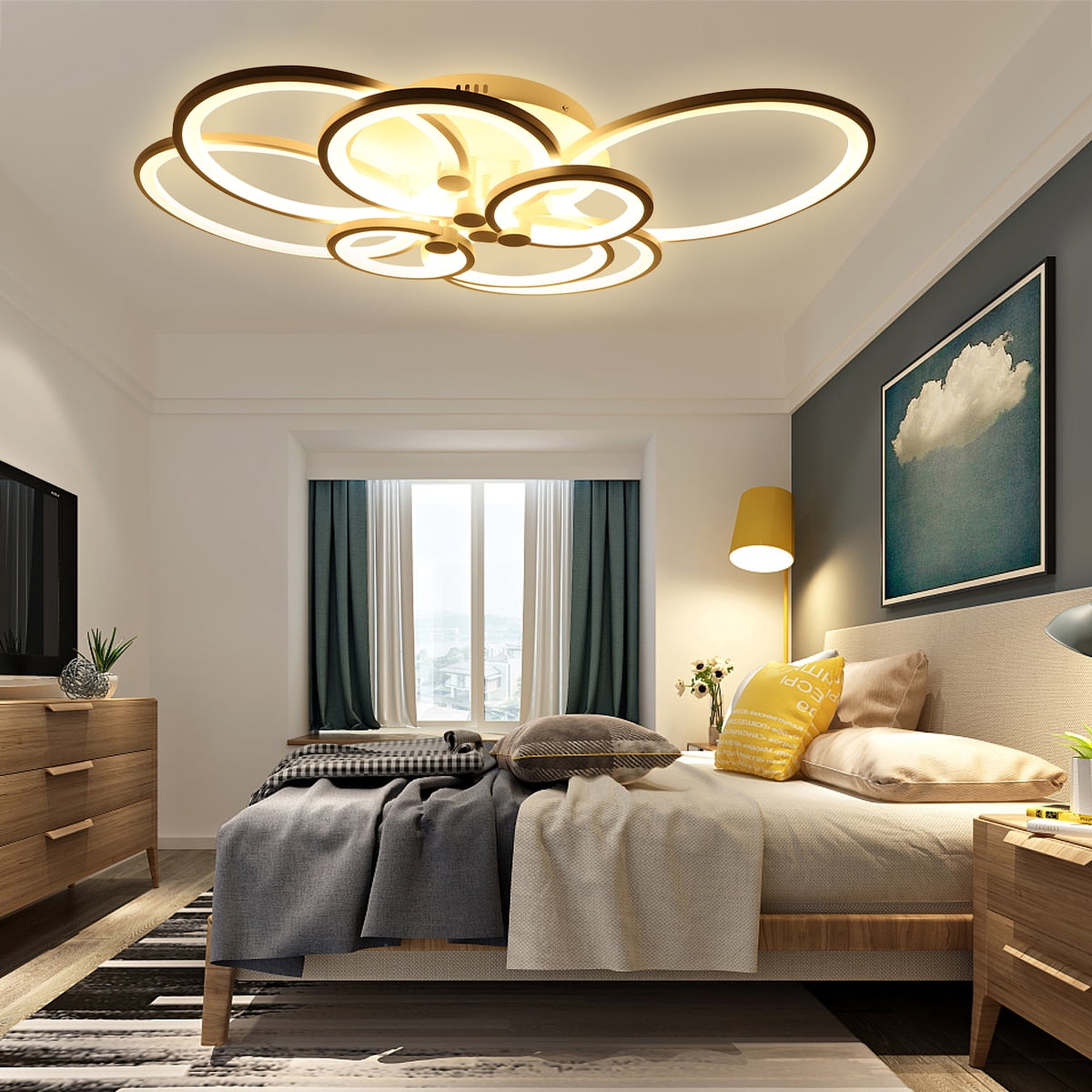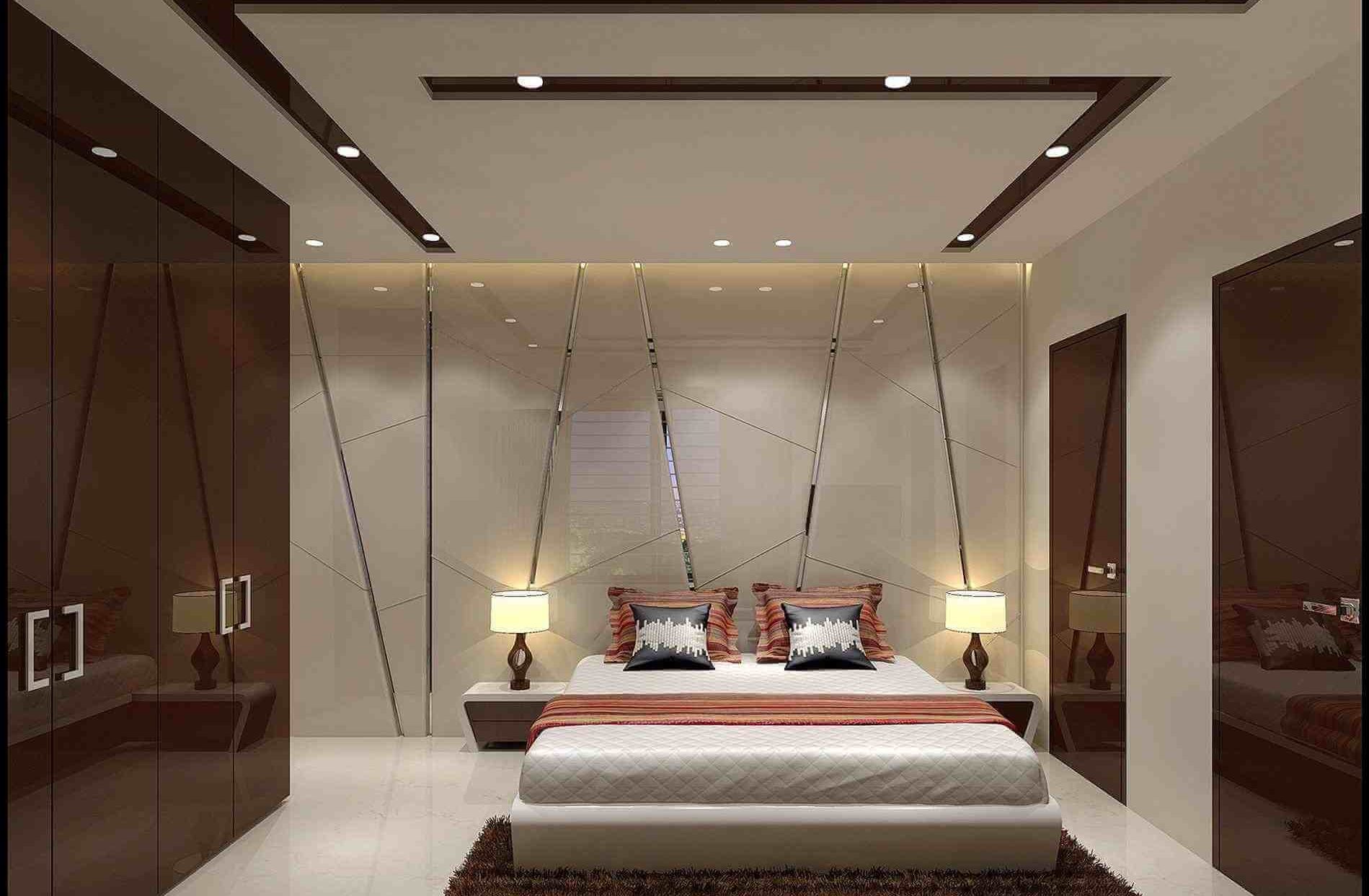Design Considerations for a Bedroom Without Overhead Lighting: Bedroom With No Overhead Lighting

Designing a bedroom without overhead lighting presents unique challenges. The absence of a central light source requires careful planning to ensure adequate illumination and create a warm and inviting atmosphere.
Alternative Lighting Sources
Alternative lighting sources are crucial in a bedroom without overhead lighting. They provide flexibility and control over the ambiance, allowing for different moods and activities.
- Table Lamps: Table lamps are versatile and can be placed on nightstands, dressers, or side tables, providing focused light for reading or creating a cozy atmosphere.
- Floor Lamps: Floor lamps offer a more substantial source of light and can be positioned strategically to illuminate specific areas, such as a reading nook or a corner of the room.
- Wall Sconces: Wall sconces are elegant and space-saving, providing ambient light while adding a touch of sophistication to the bedroom.
- Pendant Lights: Pendant lights can be hung from the ceiling and act as a focal point in the room, providing both ambient and task lighting.
- String Lights: String lights add a whimsical and romantic touch to the bedroom, creating a soft and inviting atmosphere.
Lighting Techniques for a Warm and Inviting Atmosphere
Using different lighting techniques can enhance the ambiance of a bedroom without overhead lighting, creating a sense of warmth and relaxation.
- Layered Lighting: Combining multiple light sources, such as table lamps, floor lamps, and wall sconces, creates a balanced and well-lit space.
- Dimmable Lighting: Using dimmable bulbs or switches allows for adjusting the brightness level, creating different moods for relaxation, reading, or sleep.
- Warm White Bulbs: Warm white bulbs emit a soft, yellow light that is conducive to relaxation and creates a cozy atmosphere.
- Accent Lighting: Highlighting specific features in the bedroom, such as artwork or plants, with accent lights can add depth and interest to the space.
Using Natural Light Effectively
Maximizing natural light is essential in a bedroom without overhead lighting.
- Window Placement: Position windows to allow for maximum natural light during the day. Consider using large windows or skylights to enhance natural light penetration.
- Light-Colored Walls and Furnishings: Light colors reflect natural light, making the room feel brighter and more spacious.
- Mirrors: Strategically placed mirrors can reflect natural light, amplifying its effect and creating a sense of openness.
Lighting Options for a Bedroom Without Overhead Lighting

A bedroom without overhead lighting can still be beautifully and functionally lit. The key is to choose the right combination of lamps to provide the desired ambiance and task lighting. There are a variety of options available, each with its own advantages and disadvantages. This section explores the best lighting options and how to design a plan that suits your bedroom.
Types of Lamps for Bedrooms Without Overhead Lighting
Choosing the right lamps is crucial for creating a comfortable and functional bedroom without overhead lighting. Here are some popular options:
- Table Lamps: Table lamps are a versatile option that can be placed on nightstands, dressers, or desks. They offer a focused beam of light that is ideal for reading or working. Table lamps come in a wide range of styles, sizes, and finishes, allowing you to find a perfect match for your bedroom décor. Their portability and adjustability make them ideal for changing lighting needs.
- Floor Lamps: Floor lamps are great for providing general ambient lighting in a bedroom. They can be positioned in corners or behind furniture to create a warm and inviting atmosphere. Floor lamps offer a wider spread of light compared to table lamps and can be used to illuminate a larger area.
- Sconces: Sconces are wall-mounted lamps that provide a soft and elegant lighting solution. They are perfect for creating a cozy ambiance in a bedroom and can be placed on either side of the bed or above a vanity mirror. Sconces come in a wide range of styles, from traditional to modern, and can be customized with different shades and bulbs.
- Pendant Lights: Pendant lights are suspended from the ceiling and offer a stylish and contemporary lighting option. They can be used to create a focal point in a bedroom, such as above a bed or a seating area. Pendant lights are available in a wide range of sizes, shapes, and finishes, making them adaptable to various bedroom styles.
Comparing Lighting Options for Bedrooms Without Overhead Lighting, Bedroom with no overhead lighting
Each type of lamp offers unique advantages and disadvantages. The best choice depends on the specific needs and preferences of the homeowner:
- Table Lamps: Pros: Versatile placement, focused light, easy to adjust. Cons: Limited light coverage, can be prone to tipping over.
- Floor Lamps: Pros: Wider light coverage, create a warm ambiance. Cons: Can be bulky and take up floor space, can be a tripping hazard.
- Sconces: Pros: Elegant and stylish, save floor space, create a cozy ambiance. Cons: Limited light coverage, can be expensive to install.
- Pendant Lights: Pros: Modern and stylish, can be used to create a focal point, provide ample light. Cons: Can be expensive to install, may require professional wiring.
Placement and Arrangement of Lamps in a Bedroom Without Overhead Lighting
Strategic lamp placement is crucial for optimal light distribution and a functional bedroom:
- Reading: Place a table lamp or floor lamp next to the bed or a comfortable seating area to provide focused light for reading. A bedside table lamp with a dimmer switch allows for adjustable light levels for relaxing and reading.
- Ambient Lighting: Use floor lamps or sconces to create a warm and inviting ambiance in the bedroom. Position them in corners or behind furniture to create a soft and diffused glow. Strategically placed floor lamps can create a sense of spaciousness and highlight architectural features.
- Task Lighting: For specific tasks like getting ready in the morning or applying makeup, consider a vanity mirror with integrated lighting or a table lamp placed on a dresser. Sconces on either side of a vanity mirror provide even illumination for these tasks.
- Layered Lighting: Combining different types of lamps creates a layered lighting effect that adds depth and dimension to a bedroom. A combination of ambient, task, and accent lighting creates a dynamic and versatile lighting scheme. For example, a floor lamp can provide general illumination, while table lamps or sconces offer targeted lighting for specific activities.
Designing a Lighting Plan for a Bedroom Without Overhead Lighting
A well-designed lighting plan ensures a functional and aesthetically pleasing bedroom:
- Size and Shape of the Room: The size and shape of the bedroom will determine the number and placement of lamps. Larger bedrooms can accommodate more lamps, while smaller bedrooms may require a more minimalist approach. Consider the layout and furniture placement to ensure adequate lighting throughout the room.
- Intended Use of the Space: The intended use of the bedroom will influence the types of lamps chosen. For example, a bedroom used primarily for sleeping may require fewer lamps than a bedroom used for reading, working, or entertaining guests. A bedroom designed for relaxation may prioritize ambient lighting, while a bedroom used for work or study may require task lighting.
- Desired Mood: The desired mood in the bedroom will influence the types of bulbs used. Warm white bulbs create a cozy and relaxing atmosphere, while cool white bulbs provide a more energizing and focused light. The use of dimmers allows for adjustable light levels to suit different activities and moods. A combination of warm and cool white bulbs can create a dynamic lighting scheme for various activities and moods.
Bedroom with no overhead lighting – You know that feeling when you wake up in the morning and the sun’s already blazing through your window? Yeah, well, that’s not happening in my gaff. No overhead lighting means I’m always waking up in the dark, which is a bit of a bummer, but hey, at least I’m getting a good night’s sleep.
If I wanted to go for a more calming vibe, I’d probably go for a magnolia and grey bedroom , but for now, I’m rocking the dark and mysterious look. Maybe one day I’ll get round to fixing that lighting, but for now, I’m embracing the darkness.
So, your bedroom’s got no overhead lighting, right? That’s a bit of a vibe killer, innit? But you can still make it work, especially if you’re rocking some grey bedroom pencil pleat curtains. They’ll give you that soft, diffused light, making the room feel cosy and chilled, even without the ceiling fixture.
Just make sure you’ve got some decent lamps, yeah?
